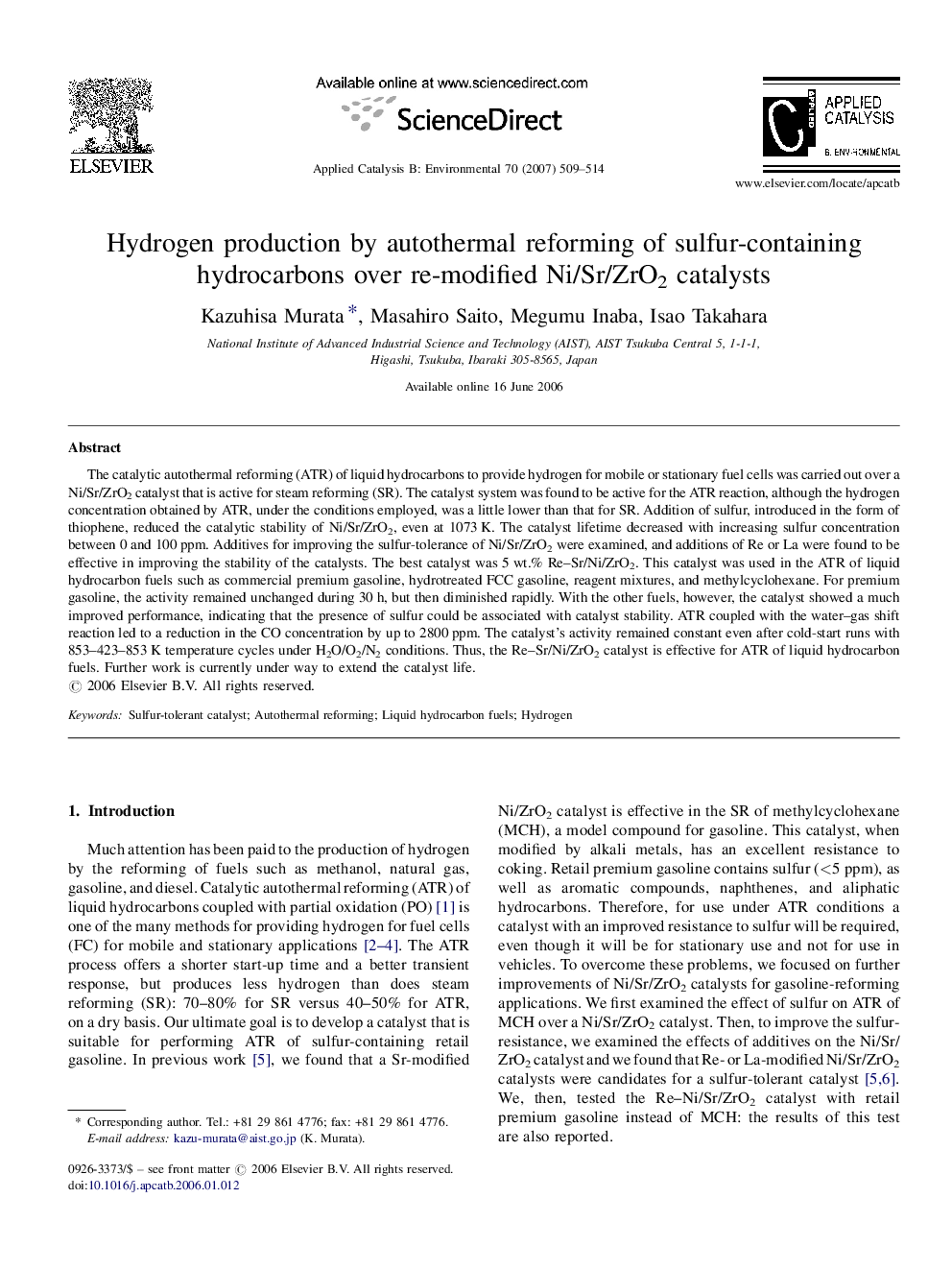| Article ID | Journal | Published Year | Pages | File Type |
|---|---|---|---|---|
| 48836 | Applied Catalysis B: Environmental | 2007 | 6 Pages |
The catalytic autothermal reforming (ATR) of liquid hydrocarbons to provide hydrogen for mobile or stationary fuel cells was carried out over a Ni/Sr/ZrO2 catalyst that is active for steam reforming (SR). The catalyst system was found to be active for the ATR reaction, although the hydrogen concentration obtained by ATR, under the conditions employed, was a little lower than that for SR. Addition of sulfur, introduced in the form of thiophene, reduced the catalytic stability of Ni/Sr/ZrO2, even at 1073 K. The catalyst lifetime decreased with increasing sulfur concentration between 0 and 100 ppm. Additives for improving the sulfur-tolerance of Ni/Sr/ZrO2 were examined, and additions of Re or La were found to be effective in improving the stability of the catalysts. The best catalyst was 5 wt.% Re–Sr/Ni/ZrO2. This catalyst was used in the ATR of liquid hydrocarbon fuels such as commercial premium gasoline, hydrotreated FCC gasoline, reagent mixtures, and methylcyclohexane. For premium gasoline, the activity remained unchanged during 30 h, but then diminished rapidly. With the other fuels, however, the catalyst showed a much improved performance, indicating that the presence of sulfur could be associated with catalyst stability. ATR coupled with the water–gas shift reaction led to a reduction in the CO concentration by up to 2800 ppm. The catalyst's activity remained constant even after cold-start runs with 853–423–853 K temperature cycles under H2O/O2/N2 conditions. Thus, the Re–Sr/Ni/ZrO2 catalyst is effective for ATR of liquid hydrocarbon fuels. Further work is currently under way to extend the catalyst life.
